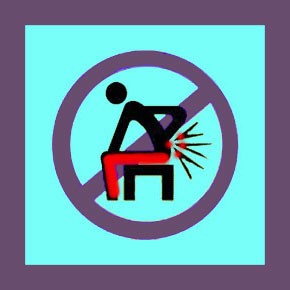
“Which are the best drugs for piriformis pain?” This is a common question that we receive weekly from readers. More importantly, readers should be asking, “Are drugs an ideal treatment for piriformis symptoms or are there better methods of relief?” This shows enlightened thinking that will help to preserve good health in the face of pain, rather than making matters worse by poisoning the body with pharmacological toxins.
We understand that there are times when drugs are indicated for various forms of treatment. However, we also can assure you that drugs are very dangerous; a fact that is reinforced by our many years of experience as expert caregivers in various healing arts. Drugs are inherently bad for the body and always have known and unknown side effects that must be considered when using them for pain management
This essay examines the most commonly used drug therapies for various piriformis diagnoses. We will look into the application of OTC and prescription products, as well as detail some effectual alternatives to drug treatment.
Best Drugs for Piriformis Pain Relief
Pain management drugs are the most often utilized for piriformis symptom reduction. These drugs reduce the severity of pain that is experienced by the brain, but do so at great expense to overall wellness. Pain management drugs have the worst side effects of all the substances which are used to treat piriformis conditions.
Prescription drugs for piriformis pain often include regulated substances combined with OTC medications in higher doses. Prescription drugs might include hydrocodone, oxycodone, hydromorphone, tramadol, fentanyl, meperidine and others. OTC ingredients might include aspirin, acetaminophen, ibuprofen and others.
All of these drugs can be very effective in decreasing the severity of pain, but do so at collateral expense of the blood, internal organs and general wellness of the body. The metabolism of these drugs places a huge strain on the body and can cause permanent injury to the anatomy that might eventually lead to fatal complications. We have never seen a patient die directly from any piriformis-related diagnosis, but have witnessed the deaths of countless patients as direct results of drug therapies that were received from their doctors.
Best Drugs for Piriformis Symptoms
There are other drugs that are frequently used to treat additional symptoms of various piriformis pain syndromes. Some of these drugs are taking via the oral route, while others are topical or injected subdermally:
Anti-inflammatory agents are commonly prescribed for piriformis syndrome, injury and RSI, even when inflammation is not present. Some of the most common substances include naproxen and various other NSAIDs.
Muscle relaxants and anti-spasmodic drugs are usually reserved for piriformis syndrome wherein spasms are deemed responsible for sciatica or pudendal nerve compression occurrences. Some of the more often utilized drugs include carisoprodol, cyclobenzaprine and atropine.
Botox and dysport are often injected to calm recurrent muscles spasm in the piriformis. Although these drugs are deadly, systemic effects can be minimized through use of subdermal injection with good results for some diagnoses.
Alternatives to the Best Drugs for Piriformis Pain
Drugs are popular with patients because they work well and are easy to use. Additionally, patients in many countries have been conditioned by their care providers to rely on drugs for every possible health issue. Unfortunately, they are not warned of the risks of these decisions and suffer the consequences once it is too late to find better paths towards health.
Doctors love drugs because they make the medical vocation simple and unbelievably profitable. Doctors get paid vast sums of cash, as well as receiving various incentives for prescribing specific drugs and brands of drugs. Some doctors make more in their drug commissions than they could ever make from patient services alone. Drugs have revolutionized modern healthcare, but not for the betterment of patients’ wellness.
Since some drugs have specific uses for piriformis diagnoses that can not be mirrored using nonpharmacological therapy, we will concentrate on pain management drugs in this last section. These substances are always optional and can be easily swapped out using constructive practices that improve health, rather than degrade or directly threaten it. Some of our favorite pain management practices that can be used in lieu of drug therapies include:
Ice and heat are free and risk free.
Massage, and other forms of bodywork, are awesome and extreme effective solutions for many acute piriformis flare-ups.
Exercises might not resolve pain immediately, but can often resolve the underlying cause of pain in a short duration.
Chiropractic works well for some patients and will not hurt.
Coaching goes one step beyond these symptom-targeting practices, since it teaches patients life skills that actually decrease their perception of pain, as well as the collateral effects of pain on their lives and physical functionality. The benefits of pain coaching extend far beyond piriformis symptoms and are useful for life.
Our proprietary pain relief program combines several excellent approaches to pain management using completely safe and effective practices.
Piriformis Pain > Piriformis Treatment > Best Drugs for Piriformis Pain





